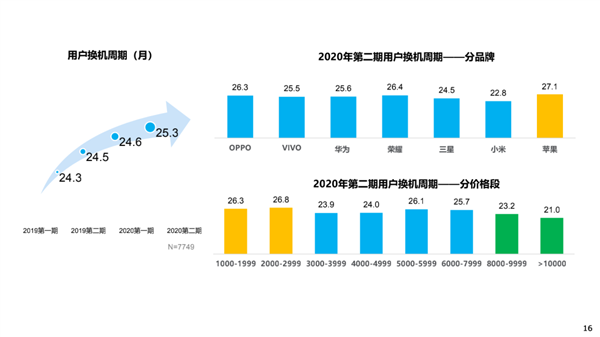A new report has revealed that the average smartphone upgrade cycle for consumers in China has risen. The average time for an upgrade is now 25.3 months, which is up by 0.7 months as of October of last year.

According to a new report from China Mobile Terminal Lab (Via Cankaoxiaoxi), the replacement cycle for older smartphone in favor of newer devices has lengthened again. The slight 0.7 month rise arrives after an increase of a whole month in 2020, compared to 2019. Although, it is worth noting that the upgrade cycle is different for various brands that are popular in the region. In this regard, Apple has the most stable and highest upgrade cycle of about 27.1 months on an average.
Meanwhile, Xiaomi users have the most frequent upgrade patterns out of the lot with just a 22.8 months upgrade cycle. Talking about the frequency in replacements for other brands, Honor has a cycle of 26.4 months, Oppo with 26.3 months, 25.6 months for Huawei, 25.5 months for Vivo, and Samsung has a replacement cycle of 24.5 months. The report adds that one of the primary reasons for the rise arrives due to smartphone technology improving over time.
In other words, the experience each device offers now is better than the models sold in the past, causing users to be content with their current devices for longer periods of time. Another interesting finding is that the upgrade cycle for both the high end and low end handsets are relatively long, crossing the 26 months mark. On the other hand, the mid range and premium grade segments have a much shorter cycle that averages around just 21 months. The premium grade flagship models are those that sell for more than 10,000 Yuan (roughly 1,552 US Dollars).

Apparently, this trend is due to buyers of low end devices being more cost sensitive about upgrades while consumers that are willing to spends upwards of 1,000 US Dollars are much likely to be early adopters for new flagship models that launch in the market. This report adds an insightful look regarding the market trends in China, which might also be a good example of the trend in a more global scale, especially after the impacts of the pandemic.
RELATED:
- China semiconductor imports sees slight decline in April, while global chip sales remain strong
- China reveals it has way more 6G patents than the U.S, laying claim to early 6G lead
- Xiaomi MIUI has successfully warned about 35 earthquakes of magnitude 4.0 and higher in China







